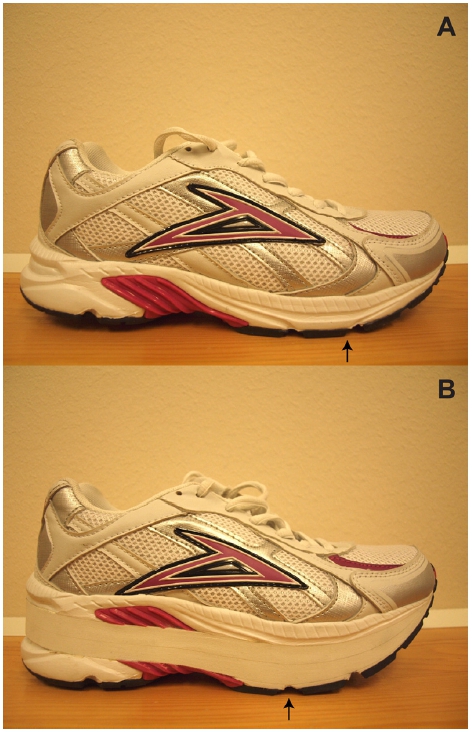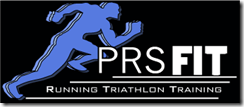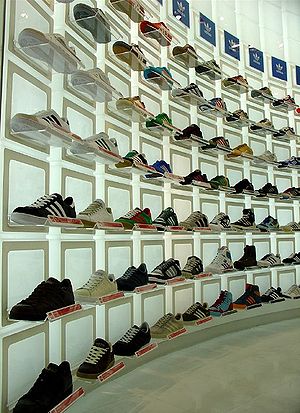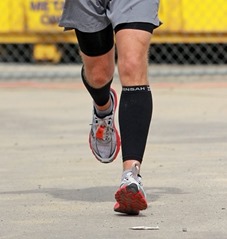A little over a year ago I wrote a few posts (here and here) detailing how my wife managed to overcome pain caused by a neuroma in her right foot by running in Hoka shoes. The Hokas seemed to do the trick pretty quickly, and I’ve since heard anecdotes from others who seem to have benefited from using Hokas to manage pain in the forefoot while running (I should point out that there are many potential causes of forefoot pain, not just neuromas).
In contrast to the above, one of the more frequently reported injuries in runners who try minimal shoes are metatarsal stress fractures (this is also largely anecdotal). I myself tend to get a generalized ache in my right forefoot when I run in Vibram Fivefingers, though this does not tend to happen in other minimal shoes.
I’m a believer that different shoes modify how forces during running are applied to the body, and if the anecdotal observations described above are in fact representative of more widespread patterns, it may be that Hokas reduce force application to the forefoot, whereas minimal shoes might increase force application to the forefoot. We do have some indirect evidence for the latter in the form of a study that showed increased bone marrow edema in the metatarsals of runners in Vibram Fivefingers relative to runners in more traditionally cushioned shoes. Furthermore, a study in press at the Journal of Science and Medicine in Sport compared plantar pressures between subjects running in minimal shoes (Merrell Pace Glove) vs. traditionally cushioned shoes, and reported the following results (I don’t have the full text of this study yet):
Peak pressure and maximum mean pressure were higher in the medial forefoot (respectively 13.5% and 7.46%), central forefoot (respectively 37.5% and 29.2%) and lateral forefoot (respectively 37.9% and 20.4%) for the minimalist shoe condition. Stance time was reduced with 3.81%. No relevant differences in shoe comfort or landing strategy were found.
This study shows that peak pressures are considerably higher under the central and lateral forefoot in a minimal shoe even when a change in foot strike type is lacking. I’ve long suspected that forces during propulsion are more important than impact forces when it comes to metatarsal stress fractures, and these results may support this idea since a change in landing type was not observed in the minimal shoe (and most people tend to heel strike with shoes on).
I’ve long wondered which aspects of a shoe like those made by Hoka might benefit runners dealing with forefoot pain. Is it the thicker midsole cushioning? Is it the wide sole? Is it the rockered design of the sole? Something else? Well, we now have a bit of evidence that might start to clarify things.
The same group that published the above-mentioned study on minimal shoe also published a study this year in Gait & Posture in which they looked specifically at the effect of rocker-soled shoes on plantar pressures during running. Here is the Abstract:
Effect of rocker shoes on plantar pressure pattern in healthy female runners
Sobhan Sobhani, Edwin van den Heuvel, Steef Bredeweg, Bas Kluitenberg, Klaas Postema, Juha M. Hijmans, Rienk Dekker
Abstract
Rocker profile shoes (rocker shoes) are one of the treatment options of metatarsalgia and forefoot stress fractures. The efficacy of rocker shoes in unloading the forefoot pressure has been shown in walking. In running, however, the effect of rocker shoes on forefoot pressure is unknown. Eighteen healthy female runners participated in this study. In-shoe plantar pressures were recorded during running with the standard running shoes and rocker shoes. Shoe comfort was assessed after each shoe measurement. Peak pressure (PP), maximum mean pressure (MMP) and force-time integral (FTI) were determined for seven foot areas. The effects of shoes on the different outcome variables were statistically analyzed using a linear mixed model. Running with the rocker shoes caused a significant reduction (p < 0.001) in all pressure parameters in the central and lateral forefoot. FTI and MMP were also reduced by 11% and 12% in the medial forefoot while running with rocker shoes. Running with rocker shoes resulted in a significant increase in all pressure parameters at the heel region (p < 0.001). Running with rocker shoes received a significant (p < 0.01) lower comfort rate than running with standard running shoes. Rocker shoes might be beneficial for runners who are recovering from metatarsalgia or stress fractures of the forefoot region, as it reduces plantar pressure in the forefoot region.
In the study, the authors recruited 18 female subjects and had them run in a traditionally cushioned shoe as well as a modified version of the same shoe (see photo below). In the modified shoe, the sole was cut and a stiffened, 2.2 cm thick rocker element was added. This rocker moved the position of the sole rolling point (I’d call this the beginning of the toe spring) back a bit toward the midfoot (53% of shoe length vs. 65% in the normal shoe – see arrows in the photo below). A weakness of this study is that the addition of the rocker element made the rocker shoes much heavier than the unmodified shoes (over 150g heavier per shoe on average). The sole stack height was also considerably thicker in the rocker shoe (2.2 cm).

Unmodified Shoe (top) and Rocker-Sole Shoe (bottom). Image via Gait & Posture
The subjects ran trials along a 22 m runway in each shoe, and plantar pressures were measured via pressure-sensing insoles installed in the shoes. They found that the rocker-sole shoe reduced peak underfoot pressure by 24% and 27% respectively in the central and lateral forefoot. Conversely, pressures under the heel increased considerably in the rocker shoes. This indicates once again that different shoes move forces around – the forefoot is offloaded in the rocker shoe, but load under the heel increases. The converse happens in the unmodified shoe.
Taken together, these two studies show that minimal shoes increase pressures under the forefoot, and rocker shoes decrease pressure under the forefoot relative to a traditionally cushioned running shoe (I believe the same traditional shoe was used in both studies). This suggests a potential benefit of a rocker sole shoe in the management of conditions that cause forefoot pain while running.
Does this mean that everyone experiencing forefoot pain should run out and buy a pair of Hokas or the Altra Paradigm/Olympus (I believe Scott also makes rocker sole shoes with a lower profile)? Not exactly. The rocker shoe in this study was stiff and heavy (almost 15oz per shoe), not a Hoka, so it’s not necessarily possible to generalize the results. However, they do suggest that trying a shoe with a sole rocker might be worth a shot if you’re dealing with nagging forefoot pain.
A few final points that I’d like to make:
1. Pressure is not necessarily a bad thing as stress on bones is necessary to keep them strong. Reducing forces excessively might be detrimental to bone health in the long term through weakening just as increasing forces excessively can lead to fracture through accumulating microdamage. Our goal is not to remove forces, but in a case of injury reducing them for a period of time might be of benefit.
2. I’d really like to see a study comparing Hokas or one of the max cushioned Altra Shoes (which have a very pronounced rocker sensation) to a lower profile rocker shoe, as well as to a traditional shoe. Modified shoes are useful in studies like this, but you can’t buy the shoe they used so generalization to things available on the market is difficult.
3. What we need most are more clinical trials where people with a particular injury are placed in a specific type of shoe to see whether it alleviates pain/symptoms. For example, if you took a group of people with neuromas and put half in a Hoka and half in a traditional shoe for a period of time what would the outcome be?
How about you – if you’ve dealt with any form of forefoot pain, have you experienced benefit from any particular type of shoe?


















Morning,
I used to run in Virrata’s, did so for a long time (switched from Kinvara), and last summer developed a neuroma in my right foot. I attribute it more to the narrowness of the shoe, and the fact that I wasn’t switching off between other shoes, so my splay was just wedged in there, every time I ran. I took time off, and switched to a pair of Asics Hyperspeed 6, and the simple extra space for my toes has made a massive difference. I still feel the neuroma “pebble in the toes” feeling here and there, but generally speaking, it’s much better. I almost stuck with a pair of Altra’s, but returned them since I like a ground feel. My humble, non-scientific, experienced base hypothesis is that cushion definitely helps, but shoe fit, neutral leaning, and a toe box with enough splay help more than anything else.
So the Virrata is really that narrow? (do you know if Virrata 2 is also that narrow?)
In Shoefitr, Hyper Speed 6 seems very narrow already!
Don’t you find the Hyper Speed 6 to be very narrow too?
I’m asking because both Virrata 2 and Hyper Speed 6 are under my radar. But I find the Cursoris to be a very good fit my feet, and they have plenty of room in the forefoot.
I believe the Pearl Izumi EM shoes also have a rocker effect as they move the take off point 25mm further back than conventional shoes. I also agree with Adam that a wider more natural toe area must help spread forces and cramped toe boxes can cause forefoot pain as can stiffness of the shoe if it is not combined with rocker. I got foot pain in the earlier Hokas but no longer in Clifton and Huaka. As far as the fractures ,running every day in minimally cushioned shoes on the road can’t be good. Most are not born or adapted to run barefoot or near barefoot on the road. A mix of shoe types for different surfaces and purposes the way to go IMO.
I’ve been running in Hokas for 2.5 years now and the difference has been nothing short of miraculous. Caution required on all of the following statements, the usual caveat “sample of one” applies.
General foot pain, especially forefoot pain was greatly reduced upon switching to the Hokas. I’ve found I can really load up the forefoot without any pain whatsoever.
I never had any diagnosed stress fractures, but always had very irritated feet to the point where doing things like standing in line at the grocery store was very uncomfortable during periods of heavy training. Those days are gone.
I think prior to the Hokas I was a mild heel striker. I believe now more of a mid-foot to forefoot striker. I think this happened as a result of being able to move footstrike forward thanks to lack of pain when doing so. It’s my perception only, not the result of studying high speed video analysis.
The counterintuitive result is that Achilles problems are greatly reduced (not eliminated), which you would think might be worsened by a highly cushioned, low-drop shoe. I was at the point of giving up running due to Achilles issues. If the heel is not loaded as much up during any part of the gait cycle, does this put less stress on the Achilles? That’s the only thing I can come up with to explain the Achilles improvement.
My general thought on these studies is that they are way too simplified. Looking at “rocker”, heel-to-forefoot “drop”, cushion versus no cushion is ignoring very complicated dynamics of both foot, shoe, and runner. For example, what is the “drop” of a Hoka shoe? The static measurement is from 2 to 6 mm depending on the model. But if you have a shoe with massive cushioning in the forefoot, and the forefoot sinks into this by several mm, then is it not really a much higher “dynamic drop”? So perhaps the static view of the shoes is not so useful?
I’ve also been successful in the Altra Olympus, but I have much lower mileage in them. I recently tried a pair of Adidas Energy Boost, and so far not doing well in them (more testing required).
It’s amazing to me that Hoka went against the grain of the rest of the industry. I’m glad they did!
I’m not in rocker shoes or zero drops or anything like that. Hanging on to my Brooks Adrenaline 13s as long as I can (overpronator with history of posterior tib tendonitis, 10EE women’s, bunion – ow – on R, custom orthotics).
Brooks screwed up the 14s and may have messed up the new 15s too. (I ran in Ariels several models ago, when a trim “upgrade” that caused blisters sent me on a 5 month, 17 shoe quest where I found the Adrenalines, which I LOVE but probably could use more support.)
Always interested in other options, but training hard and can’t spend years retraining myself (at 48) or risking injury from surprise drop changes.
Tried on Hokas, Scotts and others but never could get a decent width. Have men’s Altra pronation control shoes but too flat for me to do much but wear around the house with CorrectToes sometimes.
I have been running in the Hoka Clifton since the start of this fall. My longest run has been 15 miles. Prior to this I was having severe calf and foot issues. I second Greg’s comment about nothing less than miraculous. (So now it is a sample of two!)
I now run with relative pain-free strides. The only difference I perceive is a sluggish feeling in my upper leg, like it isn’t firing correctly. Not sure if this is just fatigue or the change in shoes. I previously ran in traditional shoes, like New Balance Trail models after failed attempts in more minimal leaning shoes. I am 6 feet tall and weigh about 203 so that may have some “bearing” on my pleasure from the Clifton’s.
I have a pair of Cliftons. I would classify them as “semi-Hokas”. The foam is so soft that my forefoot “bottoms out”, or at least it feels that way. I’m 150 lbs. The Stinson and Bondi don’t do this. I need to get more miles on them to see if I get the same benefits as from the beefier Hokas.
You may be going through an adaptation period, it took me several weeks to get 100% comfortable with the ride of these shoes.
Hi Pete,
I love this post. Great summary on an interesting topic.
One thought from back in my clinical days. Have you ever had someone do a sciatic nerve tension test barefoot then again in a shoe with a really tight forefoot (typically dress shoes but I think a tight running shoe could work,too)? After a few foot pumps in the test, people will typically get a stretching type pain in-between their MTPs in the tight shoe. I’ve never seen a study on this but it always made sense that a wider toe box could alleviate this problem better than cushioning. Thoughts?
Another question–what sensor system did they use to measure the plantar pressure in this study?
Thanks buddy!
It was a Pedar-X system. Have not tried that test on sciatic issues, sounds interesting. Actually have had a few clients in the past few weeks with nerve issues so wish I had gotten this sooner!
Thanks for the response!
You make a great couple of points at the end summarizing what to take from the research.
Point one that you make there at the end makes a case to rotate those shoes around with others so that stress can benefit the increased bone and ligament density and resting that stress at times with a shoe with a rocker.
I am also wondering about the research with the rocker shoes on the girls if they were all heel striking or forefoot striking. I just wonder if the shift of forces back to the heel would then even out if they were forefoot striking?
Can’t recall the exact numbers off the top of my head, but most were heel strikers and there wasn’t much change between the shoes.
I´m a forefoot runner and I run in almost everything, from the Nimbus 15 to Mizuno Ferus, 50-70 mpw on trails. I haven´t experienced any forefoot pain due to landing impact or push off forces yet.
But I do get foot and knee pain if the shoe is too narrow. You just can´t strike with the forefoot if it´s too narrow. Toes have to spread out. Maybe people are so used to narrow shoes that they don´t recognise a narrow fitting running shoe. And maybe heelstriking has something to do with foot pain too – I tried it and it felt unspreakably wrong. A heel striker has the wrong posture – leaning back, overstriding, overpronating etc. It´s a pandoras box of biomechanical sins. Hokas are too narrow for me and too soft (Clifton).
I had been in minimal shoes for about 8 years(since 2nd Nike Free) and was a committed fan of lightweight zero drop shoes( minimus and evo series from mizuno) who would never see myself in hokas or Altra paradigms (although I recognized they work great for others). Fate would have it nearly 2 months ago I stubbed my toe so severely in the middle of the night that it caused “turf toe” ( a MTP ligament sprain…it was one hell of a stub). I could barely walk much less run and the swelling of the MTP joint made almost all my shoes unwearable and if I got them on the bending in the forefoot was unbearable. I purchased a pair of paradigms since it was the stiffest zero drop shoe I could find and got the correct toes inserts as a stint to prevent toe movement. I could immediately walk in them since the rocker prevented the dreaded bend in the forefoot area and they were wide enough not to put pressure on the swollen joint. Bizarrely I have grown to like the shoes and will continue to use them through my recovery. I will keep them on rotation as a Long Slow day recovery tool. That is if I regain full flexibility and do not develop Hallux Limitus. Anyway, I imagine these rocker soles would be ideal for anyone suffering from turf toe or Hallux Limitus.
Hi Kev, try Medicovi Sport 100 inserts. Well recommended.
Im a podiatrist who recommends rocker soled shoes to runners and non runners with forefoot injuries I’m looking for a less expensive version of the $ 150 HOKA type shoe. Any advice appreciated.
Hoka Clifton 2 at around $130 might be the best bet, could also take a look at something like the Skechers GoRun Ultra Road, but not sure how rockered it is.